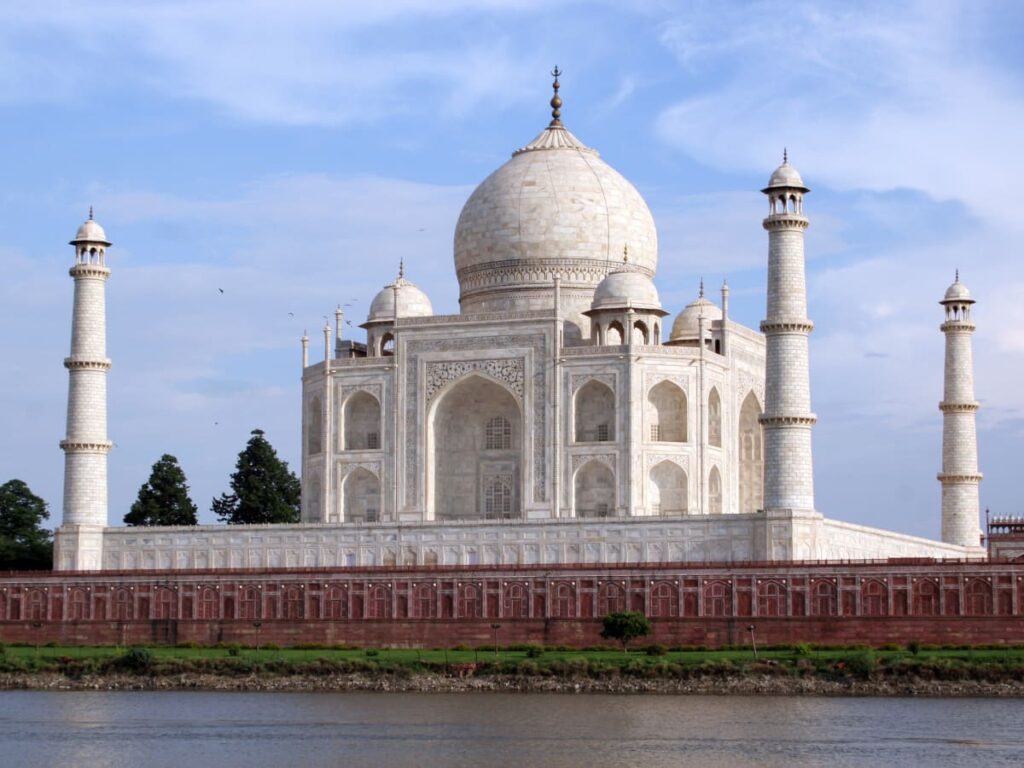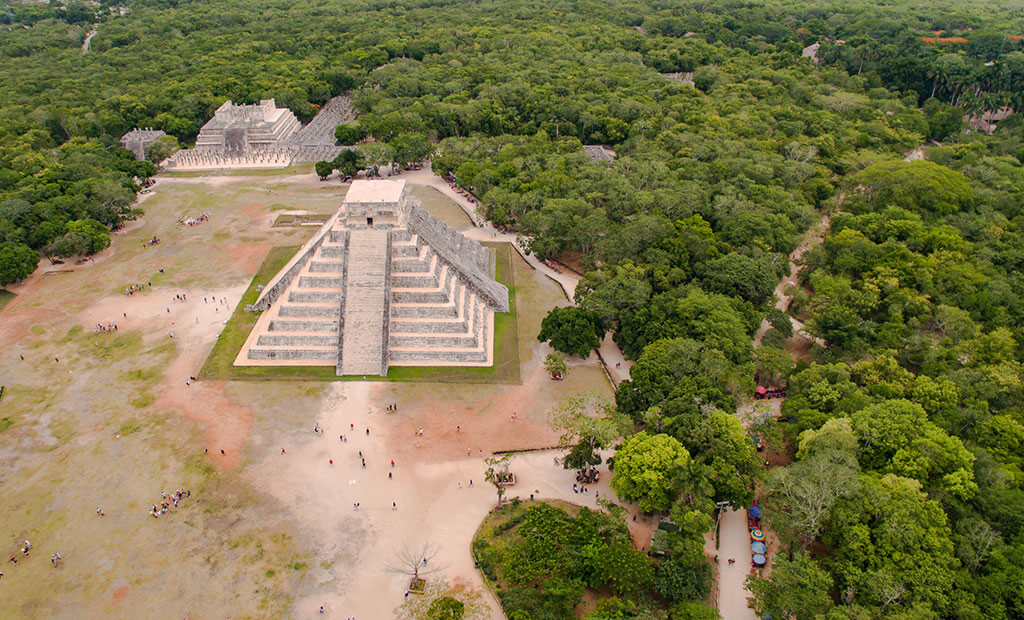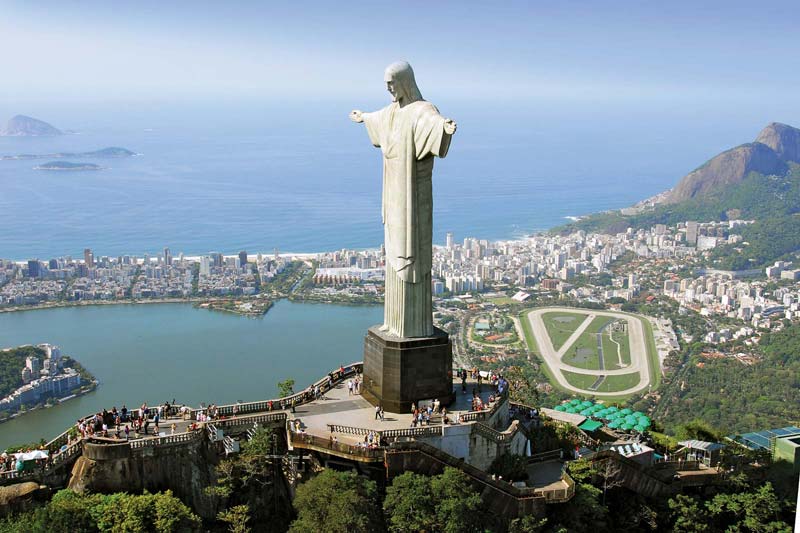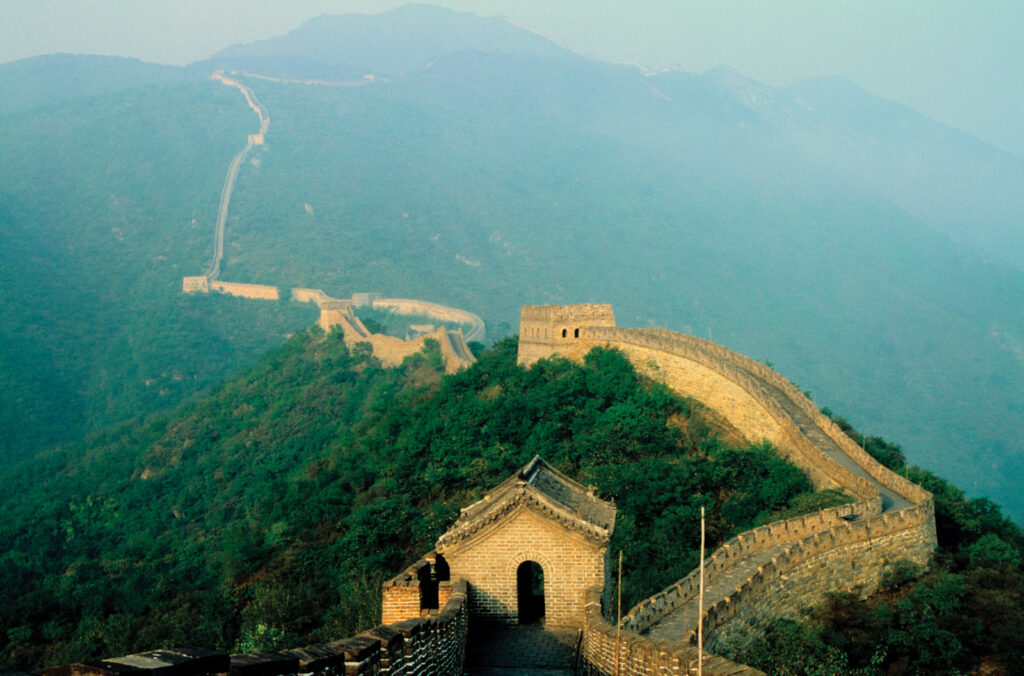The story of 7 wonders of the world

The story of the 7 Wonders of the World is a story of discovery, as people all over the world have collaborated to find and explore some of the most magnificent and beautiful structures on earth. They all wonders are ranked by UNESCO.
1. Taj Mahal
2. Colosseum Italy
3. Chichen Itza
4. Machu Pichu
5. Christ the redeemer
6. Petra
7. Great wall of China
Great wall of china
For centuries, the Great Wall of China has stood as one of the world’s most awe-inspiring achievements. The story of how it was built and the history of its use is so incredible that it’s no wonder the Great Wall is often. This is ranked 5th in 7 wonders of the world.
Story behind Great wall of china
Why was the Great Wall built?
Great wall of china History.
The Wall was built from east to west, beyond the true northern border of China. It will be constructed to protect China and its empires from being forced into violation by many groups in the Eurasian steppe. Built at the time of Qin, the Great Wall of China was constructed. He was a very integrated part of China in 221 BC. The wall was built to protect the countries of earlier freedom states. Qin Emperor wanted to link the Wall and issue protection towards northern attackers. He directed the construction of the Wall. This Wall was known as the “Li Great Wall”, in which Li presented the length unit. The Wall of the historical Revolution was not able to make ends meet for long. Each dynasty worked to preserve and expand the Wall. The Great Wall project saw a significant change during the Ming Dynasty’s (1368-1644). This is an idealistic prompt which shows now a day along the length of 6000 km. It was finally named The Great Wall of China. Many families were separated when the Great Wall was built. Many workers were killed. Many workers are buried at the Great Wall. With wisdom, zeal and blood, the Great Wall was built with sweat, tears, perspiration, and zeal. This was a difficult time in the century. It was constructed using many techniques. This place was built by many people, including soldiers, farmers, and terrorists. Stone, brick, soil, and sand were the materials used to build this Wall. There were three types of technology used to transport materials up the mountains and across the plains. These were wheelbarrows, hand, and animal use. The Great Wall is not only a cultural delight, but it is also the largest project in China. Many stories were told about the Great Wall’s completion, including a tragic but sweet love story set in the Qin Dynasty. Later, the Great Wall was opened to the public as an attraction for tourists. The Great Wall has been visited by hundreds of millions of tourists. This place might receive 70,000 visitors per day during crown season.
Facts about great wall of china
1. Official length: 21,196.18 km (13.170.7 mi). 6+ Dynasties’
2. The Ming Dynasty Great Wall, which measures 8,851 km (5.500 mi) is the most popular relic today
3. The Great Wall dates back more than 2300 years
4. The Ming Great Wall stretches across 9 provinces: Liaoning. Hebei. Tianjin. Beijing. Inner Mongolia. Shanxi. Shaanxi. Ningxia. Gansu
5. Badaling was the most visited section with 63,000,000 visitors in 2001. The visitor flow can reach 70,000 in the first week between May and October
6. The Great Wall at Badaling, Juyong Pass and its average height is 7.88m. The highest point is 14
7. Nearly 1/3 of Great Wall disappeared without trace
8. The Great Wall has not been reconstructed for tourism purposes since 1644 when the Ming Dynasty was overthrown
9. Badaling, 1957 was the year that began reconstruction of the Great Wall and protection
10. The Great Wall was added to the UNESCO World Heritage List in December 1987
CHICHEN ITZA
The ancient city of Chichen Itza, set in the middle of dense jungles of central Mexico, is one of the most famous sites in the world. The site has been visited by humans for more than 2,000 years and was declared. It is ranked 2nd in the 7 wonders of the world.

Story Behind Chichen Itza
Chichen Itza was an ancient Mayan city located on the Yucatan Peninsula of Mexico. It’s a popular tourist attraction but Chichen Itza is also an active archeological site. The area is still being explored for new discoveries that provide more information about the culture and achievements of the Mayan people who ruled large swathes of Central America and Mexico before the arrival of European colonists. Chichen Itza was designated a UNESCO World Heritage Site by the United Nations in 1988. In 2007, the world voted it one of the Seven New Wonders of the World in a global survey. Chichen Itza can be found approximately 120 miles from Cancun, Mexico’s Yucatan Peninsula resort. Chichen Itza, a term that means “at the mouth the well of itza,” is the name of Chichen Itza. Itza was an ethnic group of Mayans that rose to power in the Yucatan peninsula’s northern part. This is where the city is situated. The name of the well refers to the many underground rivers that run under the area and probably served as the water source for the city. The location was ideal for a city as large as Chichen Itza because it had easy access to water. When was Chichen Itza constructed. Historical accounts vary on when Chichen Itza was constructed and how it became a center for political and economic power. Some sources place the founding of the city in the first 400s A.D. while others believe construction began in the middle of the fifth century. It was already the largest city in the Mayan world. It covered nearly two miles of densely populated commercial, residential, and other stone structures. Chichen Itza had even its own suburbs, with smaller homes located on the outskirts
Facts About Chichen Itza
1. Chichen Itza has been designated as one of the Seven New Wonders of the World. It was also enlisted in the UNESCO World Heritage Sites List in 1988.
2. Chichen Itza is a term that means “the mouth at Itza’. Itza is believed to mean “water magicians”, a term that derives from the Mayan Itz meaning “magic” and the A for “water”.
3. El Castillo (the Temple of Kukulkan) is the famous pyramid which dominates the site of Chichen Itza and it actually sits on another much older temple.
4. Believed by archaeologists to have been a powerful economic city around 600 AD, the fall of Chichen Itza is thought to have been approximately 1000 AD.
5. The design and layout of Chichen Itza was clearly well planned and builders constructed temples and pyramids in sets of clusters.
6. The Ossario Group is the most prominent cluster, while the Central Group, Ossario Group and Old Chichen are less well-known. The Great North Platform houses the most popular sites in Chichen Itza: the Kukulkan Pyramid and the Great Ball Court, as well as the Temple of the Jaguars.
7. During the Spring (20th of March) and Autumn Equinox (22nd September), sunrays creates a shadow across the Kukulkan Pyramid that gives the appearance of a serpent slithering down the staircase.
8. Located on the north side of the Kukulkan Pyramid is a platform dedicated to the planet Venus. The Mayans were devoted astronomers and the movements of Venus held special meaning to them, with it influencing the architecture of the ancient Mayan city
9. Although the Kukulkan Pyramid is the most famous and most visited, there are numerous others in Chichen Itza. The Osario is very similar but smaller in size and at the centre is an opening to a natural cave.
10. Many of the sites in Chichen Itza are known for their unusual sounds. If you clap once from one end of the Ball Court, it produces nine echoes in the middle of the court. Additionally, a clap in front of the Kukulkan Pyramid creates an echo resembling the serpent’s chirp.
Christ the redeemer

The Christ the Redeemer statue towers 2,310 feet high above Rio. It has been a fascination for historians and experts for almost a century. It is the fourth-largest statue of Jesus Christ in the entire world and the largest Art Deco-style statue on the planet. To top it off, the statue was named one of the New Seven Wonders of the World in 2007, along with Machu Picchu and the Great Wall of China. The statue is perched high on Mount Corcovado, Rio’s highest point. It stands at a staggering 98 feet (30 metres) high (which makes it twice as tall as New York’s Statue of Liberty). Its outstretched arms extend to 92 feet (or 28 metres) horizontally. The statue is not only the most iconic landmark in Rio but it has also become a cultural icon for Brazil. The statue is a symbol of Christianity and attracts millions of Christians and non-believers every year to Mount Corcovado.This is ranked 6th in 7 wonders of the world
Story Behind Jesus the redeemer statue
In the 1850s, a priest in Rio suggested the idea of a huge statue of Jesus Christ. He had apparently requested Princess Isabel, the daughter of Emperor Pedro II (and Princess Regent of Brazil), to finance the project. However, the idea was abandoned after the Declaration of the Republic in Brazil was declared in 1889. This was a landmark move that separated the state and the church in Brazil. After World War I, the Roman Catholic archdiocese of Rio and a few locals became concerned about “lack of religion” in Brazil. They hoped that placing a huge statue of Jesus on top Rio’s mountain would make it rebel against “increasing godlessness” within the country.
The statue was to be placed at the top of Mount Corcovado, so that it could be seen from everywhere in Rio and represent a way of “reclaiming Rio”, which was then Brazil’s capital. It is not just one designer that created the statue, but several different designers over nine years. The statue’s construction cost $250,000, or the equivalent of $3.4million today. It was entirely funded by the Catholic community of Brazil. Heitor da Silva Costa, a Brazilian engineer, sketched the statue of Jesus with a cross in one and a globe the other. He also suggested that the statue “face the rising Sun” from the top. The statue was eventually redesigned by Costa into an Art Deco-style sculpture. It is seen today with Jesus Christ reaching out his arms as if to greet the Rio citizens (literally).
Gheorghe Leonida was the Roman artist who designed the face. Paul Landowski, a French-Polish sculptor, created the Art Deco design of the statue. He spent many years designing it into clay pieces that were then shipped to Brazil to be remade with concrete. Anyone who sees the statue for the first-time is often baffled by the fact that it was ever up there. Due to its massive size, the statue had to be assembled on Mount Corcovado. All the materials and workers were then transported up the mountain by a small cogwheel train. This train was used primarily to transport tourists to the top to enjoy the views. Long wooden poles were used as scaffolding by workers during construction. They had to actually scale the poles in order to place all the materials. This was a daunting task, but it also symbolized the intense religious faith of the locals.
Facts About Christ the Redeemer /Jesus the Redeemer
1. Christ the Redeemer statue is located on Corcovado, a mountain 710 metres high (2,329 feet) and covered in thick Atlantic Forest vegetation. It took long to complete the statue, which stands at 38m (124.7 feet). Construction took nine years to complete. It began in 1922, and was completed in 1931
2. It is third in height to the Cristo de la Concordia in Bolivia, which stands at 40m (131.2 feet tall), and Christ The King in Poland at 52m (170.6 feet
3. The Christ the Redeemer was named one of the Seven New Wonders of the World in July 2007
4. It is vulnerable to lightning strikes because it stands on top a mountain. This causes it to be hit multiple times per year. An enormous thunderstorm in 2008 caused severe damage to the head, eyebrows and fingers. In 2014, lightning struck and severed one of Christ’s fingers
5. The Christ the Redeemer statue is the largest Art Deco sculpture in the world. It was created by Paul Landowski, a French sculptor. It was then built by Albert Caquot and Heitor da Silva Costa, a Brazilian engineer
6. It is not the original design of Christ the Redeemer, which everyone knows and loves today. Initial plans called for a large Christ holding a globe and a cross in each hand. The original design was accepted by the project organizers. However, the statue that is today was created with the arms spread wide
7. The statue will slowly get darker over the years. The Christ’s designer, da Silva Costa, took the light-coloured stone from a quarry in Minas Gerais. The stone is difficult to replace because it is so rare. Therefore, restorers have to resort to using other types of stones to repair any damage. This means that the statue’s light-coloured stone is slowly being replaced by a darker one
8. Graffiti artists wrote over the statue in 2010 by defacing it. The vandals were eventually caught by the authorities
9. Brazil’s Catholic Church donated the entire amount to Christ the Redeemer
10. Visitors had to climb 220 steps to reach the Christ the Redeemer. This was the only way to get there, not just for seniors or those with disabilities. To the relief of future visitors, an elevator was built in 2003 so visitors could make much easier.
Petra Jordan
Petra Jordan is a talented sculptor who has created the 7 wonders of the world from clay and plaster. Petra is also an art teacher and a mother to two children.
Petra, an ancient city in Jordan that dates back to the fourth Century B.C. The remains of this once-great city and trading hub serve as an important archaeological site and tourist attraction. Petra is approximately 150 miles from both Jerusalem and Amman (the capital of Jordan), and roughly halfway between Damascus and Syria. This makes it an ideal location for commerce and trade in the region. Petra is also known as the “Rose City”, due to the color of its stones. In 1985, it was designated a UNESCO World Heritage Site. It is ranked 7th among 7 wonders of the world.

Facts About Rose City / Facts about Petra
1. Only 15% of Petra have been discovered by archaeologists. This means that there are still many secrets to uncover
2. Petra’s name is derived form the Greek word “petros”, which literally means rocks
3. Petra is home 800 tombs. These are known as the “Royal Tombs”, the most famous being The Treasury. The Treasury, which was built originally as a mausoleum/crypt, is more than 2,000 years old
4. Johann Ludwig Burckhardt, a Swiss explorer, discovered Petra in 1812. It is often called the “Lost City” because it was an unknown metropolis for approximately 5 centuries
5. Petra Archaeological Park was designated a UNESCO World Heritage Site in 1985 because of its historic importance and delicate structure. Petra is also half-built and half-carved into rocks
6. Petra is located between the Red Sea and Dead Sea. It was an important junction between Egypt and Syria-Phoenicia in Hellenistic and Roman times. Petra was also the hub for silks from China, Indian spices and Arabian incense
7. Petra wouldn’t be possible without the water channel system, which was built to provide storage and supply for its citizens. According to some reports, enough water was available to provide enough water for the estimated 30,000 inhabitants of Petra
8. The Mummy Returns and Indiana Jones are three of the most notable movies to have been shot at Petra. The Last Crusade and Indiana Jones increased awareness of Petra, which led to an increase in tourism.
Taj mahal
The Taj Mahal is a mausoleum that was constructed in the 1600s in Agra, India. It is often referred to as the “monument of love” and it is the symbol of India’s wealth. This is ranked 1st in 7 wonders of the world and the most beautiful in the world.

Shah Jahan, grandson to Akbar, the Great met his beloved for the first time in 1607. He was not yet the fifth Emperor of the Mughal Empire at the time. Sixteen-year old Prince Khurram, as was his name then, danced around the royal bazaar with high-ranking girls who manned the booths.
Prince Khurram met Arjumand Beum at one of these booths. This 15-year-old girl whose father was soon the prime minister and whose aunt was also Prince Khurram’s father, was a young, beautiful woman. Although they were in love at first sight the couple was not permitted to marry immediately. Kandahari Begum was the first woman Prince Khurram had to marry. Later, he also married a third woman.
On March 27, 1612 Prince Khurram married his beloved Mumtaz Mahal (“chosen among the palaces”). Mumtaz Mahal was both beautiful and smart, as well as tender-hearted. She cared deeply for her people, which was why the public loved her. To ensure that widows and orphans were fed and provided for, she meticulously kept a list of them. They had 14 children, but only seven survived to adulthood. Mumtaz Mahal would be killed by the birth of the 14 th child.
Construction of the Taj Mahal
Shah Jahan was the ruler of the Mughal Empire, which was one of the most prosperous empires in the world. This meant that he had the resources and the means to build this magnificent monument. He wanted it to be spectacular, but he also wanted it to be erected quickly.
An estimated 20,000 workers were brought in to speed up production and placed in nearby homes in Mumtazabad, a special town that was built for them. Both skilled and unskilled craftsmen were hired.
The foundation was first built, then the massive plinth or base (624 feet long) was constructed. This would be the base for the Taj Mahal building, as well as the two matching red sandstone buildings which would flank it, including the guest house and mosque.
The Taj Mahal was built on a second plinth and would be an octagonal structure made of marble-covered brick. To build higher, the builders built a scaffolding. It was a strange choice of bricks to make this scaffolding, which is still perplexing to historians.
The Taj Mahal’s most prominent feature is white marble. The marble was quarried 200 miles away in Makrana. It took 1000 elephants and a large number of oxen for the marble to be dragged to the site.
A giant, 10-mile-long earthen ramp allowed the huge marble pieces to reach higher places of the Taj Mahal. The Taj Mahal’s dome is covered in white marble and has a massive double-shelled dome measuring 240 feet. The mausoleum is surrounded by four minarets made of white marble, each with a thin profile.
The Taj Mahal is a large, white building. Most photos of it are not true. Although the Taj Mahal is still beautiful, these photos don’t show the true structure. These photos don’t show the intricate details of the Taj Mahal. They are a complete lack of detail and make it seem so feminine and luxurious.
The large main gate, mosque, and guest house at the southern end of this complex contain passages from the Quran, or Koran, which is the holy book of Islam. They are written in calligraphy. Amanat Khan, a master calligrapher, was hired by Shah Jahan to create these inlaid verses.
The Quran verses are beautifully inlaid with black marble. These are a beautiful, yet subtle feature of the building. The curves, although made from stone, resemble real handwriting. Amanat Khan is said to have chosen 22 Quran passages. Amanat Khan was, surprisingly, the only one Shah Jahan allowed sign his work on Taj Mahal.
The delicately inlaid flowers that are found throughout the Taj Mahal complex are almost as impressive as the calligraphy. In the parchin-kari process, highly skilled stone cutters created intricate floral designs in white marble. These were then inlaid with precious and semiprecious stones to create interwoven vines and flowers.
These flowers are made from 43 types of semi-precious and precious stones. They come from all over the globe. This includes lapis lazuli, jade, malachite, and turquoise, all from Sri Lanka.
Interesting Facts about Taj Mahal
1. The Taj Mahal was built with 22,000 workers, including painters, stonecutters and embroidery artists.
2. Legend has it that Emperor Shah Jahan wanted to build another Taj Mahal made of black marble across the river, but a war with his children interrupted these plans.
3. The Mausoleum’s changing hues at different times of day capture the moods of Emperors wives. It is pinkish in the morning, and milky white at night.
4. This complex work of architectural genius and art took 17 years to complete.
5. The white dome, at the top of the mausoleum’s peak, is its most prominent feature. It is often called the “onion dome” and rises to approximately 35m (115ft). It is surrounded with four other domes.
6. The Taj Mahal, an iconic landmark in India and tourist attraction, attracts more than a million tourists each year.
7. Rumors continue to swirl about the mausoleum. Rumours say that Emperor Maximus ordered all workers on the mausoleum to be axed so that it could never be replicated again.
8. To make Taj Mahal as beautiful as it is, the Emperor would need to spend about US$100 if it were to be constructed today.
9. A staggering 1,000 elephants transported the materials used in Taj Mahal to their construction site.
10. During the Indian rebellion of 1857, many of the precious stones found in the mausoleum had been removed from the walls by the British army.
Colosseum Italy
The Colosseum was the most important building in Ancient Rome. This monument was built to serve as a theater for public spectacles and entertainments, as well as an arena for blood sports. It is ranked 4th in 7 wonders of the world.
Colosseum Also known as Flavian Amphitheatre Giant Amphitheatre Built in Rome Below the Flavian emperors. The construction of the Colosseum began sometime between 70 CE and 72 CE during King Leo III. Vespasian It is located east of the city. It is located east of the Palatine Hill On the basis of what was Nero”s” Golden House. The artificial lake, which was the centerpiece of the palace complex, was drain and the Colosseum was placed there. This decision was symbolic as well as practical. Vespasian, whose rise to the throne was not easy, decided to replace the private lake of the tyrannical Emperor with a public amphitheatre capable of hosting tens to thousands of Romans.
The structure was officially dedicated in 80 CE by Titus in a ceremony that included 100 days of games. Later, in 82 CE, Domitian completed the work by adding the uppermost story. Unlike earlier amphitheatres, which were nearly all dug into convenient hillsides for extra support, the Colosseum is a freestanding structure of stone and concrete, using a complex system of barrel vaults and groin vaults and measuring 620 by 513 feet (189 by 156 metres) overall. The arcades surround three stories of the arena and are framed by exterior columns of engaged columns from the Corinthian, Doric, and Ionic orders. This arrangement became the foundation of the Renaissance codification, the “assemblage of orders”. The facade and main structural framework are made of travertine. Secondary walls are made from volcanic tufa and concrete.
Facts about Colosseum Italy
- Between 1898 and 1899, the Colosseum was constructed.72 A.D And 80 A.D Below the Emperor Vespasian In the heart of Ancient Rome.
2. Made from Stone And concrete. This magnificent monument was built using the labor of tens to thousands of slaves.
3.The Colosseum is the largest. Amphitheater The word “theatre-in-the-round” is used to describe the entire world. It is oval in shape and measures 189m long by 156m wide by 50m high (about the height a 12-storey building). It could easily accommodate a modern-day football pitch in this ancient sporting arena!
4.This amazing building was 80 entrances It could hold approximately50,000 spectators Who would attend sporting events and games? These events featured gladiatorial fights, wild animal hunts, and ship-to-ship naval battles.
5. All are welcome! There was no entrance fee for major Colosseum events, which were often organized and paid for by the Emperors. There was also an And Free food Sometimes, it was also served. Bonus! This was a way for Emperors to gain support and popularity from the public.
6. Although the Colosseum event was brutal, around 10,000 animals were killed during games that were held by the Emperors.
7. In 80 A.D., the first ever games were held.Emperor Titus They ran for 100 consecutive days. For centuries, games were held – gladiatorial and animal hunts for the sixth century respectively.
8.The was built to protect spectators from the heat and sun of Ancient Rome. velarium An awning could be pulled up over the seating area to provide shade. You’re clever, right?
9.There were many rooms located below the Colosseum. Underground passages. This is where gladiators and animals were kept until they could meet their fate in this arena. There were also 36 trap doors Special effects in the arena
10.Two-thirds of the Colosseum have been destroyed by fires, earthquakes, vandalism and other causes, but it is still a popular tourist attraction that attracts thousands every year.
Machu Pichu
Machu Picchu is a 15th century Inca citadel and archaeological site located in the Andes Mountains in Peru. The citadel sits on a ridge between two peaks, in an area of the Urubamba Valley that would have been. It is ranked 3rd in 7 wonders of the world.
Also spelled Machu pihchu Site of the ancient Inca Ruins located approximately 50 miles (80km) northwest of Cuzco Peru. In the Cordillera de Vilcabamba. The Andes Mountains It is located above the ground. It can be seen from the Urubamba River Valley in a narrow saddle, between two sharp peaks — Machu Picchu (“Old Peak”) & Huayna Picchu („New Peak at an elevation of 7,710 feet (2,350 metres). Machu Picchu, one of the few pre-Columbian major ruins that was almost intact, was declared aUNESCO World Heritage Site1983
Although the site escaped detection by the Spaniards, it may have been visited by the German adventurer Augusto Berns in 1867. Machu Picchu’s existence wasn’t widely known until Hiram Bingham of Yale University, who was guided to it by Melchor Arteaga (a Quechua-speaking resident), in 1911. Bingham had been seeking Vilcabamba (Vilcapampa), the “lost city of the Incas,” from which the last Inca rulers led a rebellion against Spanish rule until 1572. In his designation of the site Vilcabamba, he cited evidence from 1912 Machu Picchu excavations, which were sponsored Yale University and National Geographic Society. However, this interpretation is not widely accepted.
Bingham excavated Machu Picchu in 1915, Luis E. Valcarcel in 1934, and Paul Fejos in 1940-41. Further discoveries in the Cordillera of Vilcabamba have revealed that Machu Picchu was part of a number of pucaras (fortified locations), tambos (travelers’ barracks or inns) and signal towers that ran along the extensive Inca footway.
Facts About Machu Pichu
- Hiram Bingham III, an explorer who first discovered Machu Picchu in 1911 was searching for the Lost City of the Incas, also known as Vilcabamba. In fact, he believed Machu Picchu to be Vilcabamba, the place where the Incas had fled to after the Spanish arrived in 1532. Bingham’s theory was proved false when Gene Savoy, a 1964 discovery of Espiritu Pampa, discovered the true lost city.
The Incans set fire to the forest around Machu Picchu in order to prevent any Spanish looting. It was not discovered by the Spanish and was not known to anyone outside until Bingham visited it in 1911. Although many believe the Incas abandoned it, there were three families living in the area when it was discovered. This led to some believing that it wasn’t forgotten.
Another secret of Machu Picchu is the fact that the Incas designed buildings that could withstand frequent earthquakes. Ashlar masonry, an ancient engineering technique that allowed rocks to be glued together without the use of mortar, was used. The stones “dance” in an earthquake and then settle back to their original positions after the tremors have stopped.
Tourists marvel at the amazing feats of engineering. However, 60% of the town’s construction is underground. To withstand the harsh weather, the Incas built deep foundations and a large crushed rock drainage system.
The Machu Picchu Mountain is a great alternative to waiting in line for the 400 people who make the 60-minute climb to Huayna Picchu. It is twice as high as Huayna picchu at 1,640 feet and offers stunning views of the Urubamba River winding its way through the ancient city.
Archaeologists believe Machu Picchu was built as a vacation spot for the royal family, to escape Cuzco’s bustling city.





1 thought on “The story of 7 wonders of the world”
Comments are closed.